The Hart Museum remains closed. Los Angeles County has approved a plan to transfer the William S. Hart Museum and Park from the County to the City of Santa Clarita.
A Rare Deep Sea Gem Arrives at NHM
A Pacific footballfish, a type of anglerfish that typically lives thousands of feet underwater, and that washed ashore at the beach, is now part of our Ichthyology Collection.
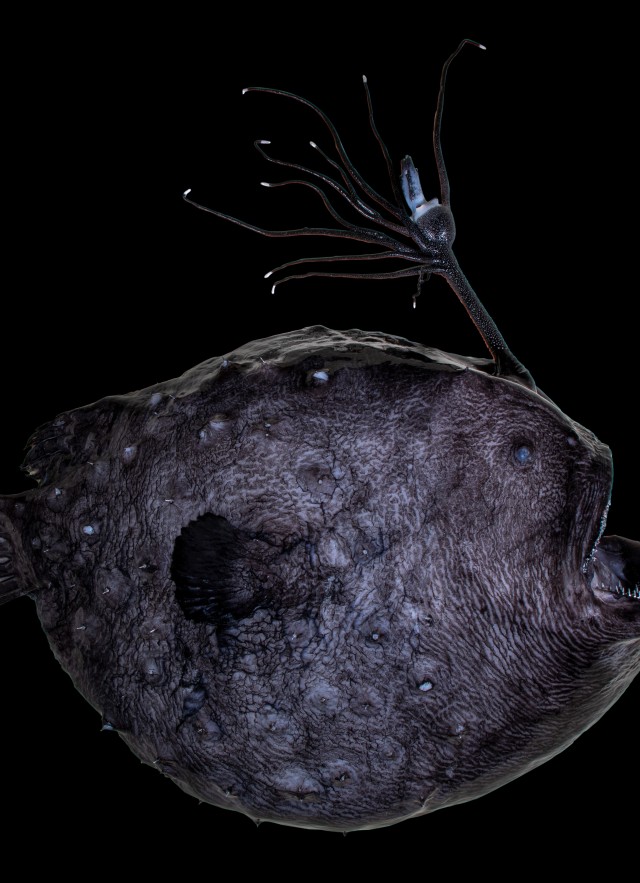
It was a thrilling day for the scientists (and a wide array of fish fans) in the Ichthyology Department in late May when a very rare specimen made its home at the museum.
"It's one of only about 30 adult female specimens of this species, and having one washed up in this condition is extraordinary," said NHM’s Ichthyology Curator Dr. William Ludt of the extra large anglerfish found on the sand at Crystal Cove State Beach in Newport Beach.
Here's more of what Dr. Ludt said about this special specimen:
"This is a Pacific Footballfish (Himantolophus sagamius), and she is quite large at about a foot in length. We know that this specimen is a female due to her size and shape, as males don’t ever get close to this size, and while males of other anglerfish families are known to be parasites that latch onto females, that has never been observed in this family. Like all anglerfish, she has a bioluminescent lure (technical term an esca) that is used to attract prey in the pitch-black habitat where she lives between 1,000 and 4,000 feet deep. Strangely, this specimen was found washed up on a beach in pristine condition. We feel very fortunate to add her to our collection!"
"From this specimen, we have the first documentation of biofluorescence in a deep-sea anglerfish, which will be published in the Journal of Fish Biology. This is a notable finding because for biofluorescence to occur, there needs to be a source of light, which is completely absent in the deep sea."
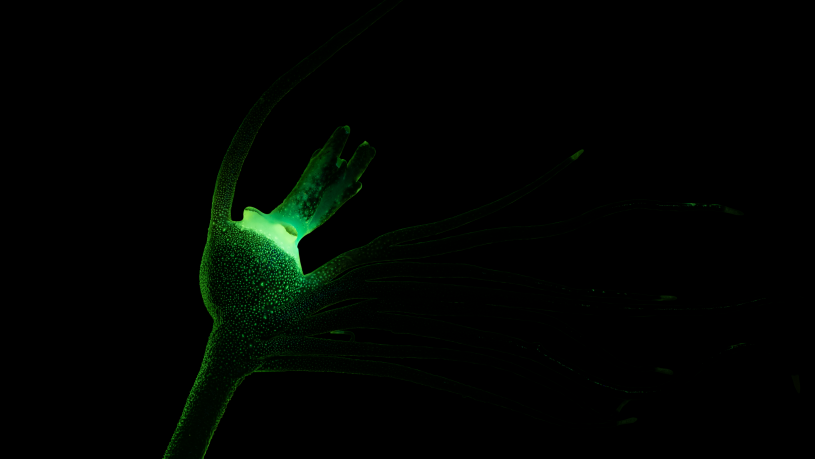
"What seems to be occurring is that the light produced by the bioluminescent lure (which occurs due to bioluminescent bacteria) is enabling this biofluorescence. We think that the combination of bioluminescence and biofluorescence in deep-sea animals is extremely rare, as it has only been documented in a few species (one other group of deep-sea fishes that aren’t anglerfish, a jellyfish, and a siphonophore). However, this finding suggests that it may be more common than we think, and that it simply isn’t examined because researchers assume fluorescence isn’t occurring due to the lack of light in the deep oceans. Ultimately, it is difficult to say what the function of this fluorescence is without observing it in the wild, but it may allow the anglerfish to have a more enticing and complex lure to attract prey or mates in the cold, deep depths of our world’s oceans."
Todd Clardy, NHM's Ichthyology Collections Manager, said the museum has only one other anglerfish from California waters, collected in 1983. The only other two specimens include one collected in 1975 from Indonesia from a trawl at 2,700 feet, and another from 1971, collected from a Hawaii trawl at 2,100 feet. Soon after the most recent fish find was brought into the collections room, it was thawed out and the staff started the fixation and preservation process.
There are so many fantastic aspects to this deep-sea dweller—its light organ, its diet, the spikes in its body, and the teeth! Having another in the collection is not just a boon to scientists and Pacific footballfish fans at our museum but also to fish enthusiasts around the planet.
Keep following on social with Todd Clardy and Bill Ludt and stay tuned for more of their angler adventures at NHM!
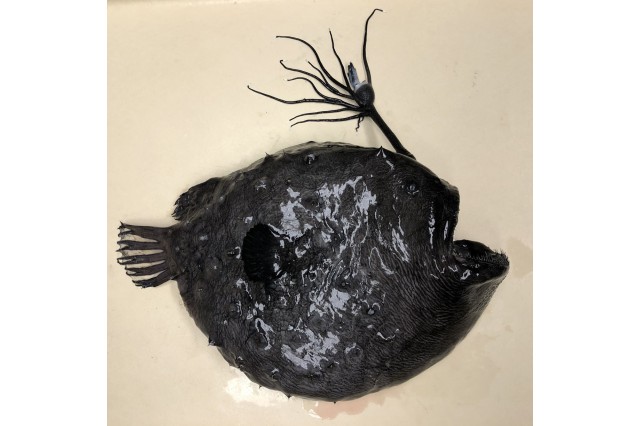
Photo by Todd Clardy
Living, glowing bacteria called photobacterium light up an anglerfish's lure, or esca, to attract unwitting fish in the deep, dark sea.
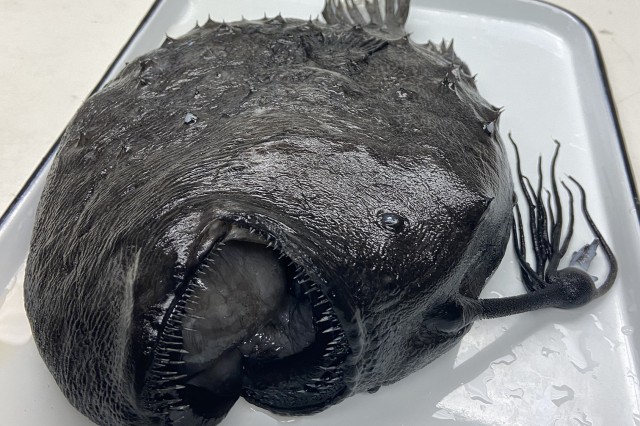
Photo by Sally Marquez
Its intimidating teeth are pointed inward to help make sure prey can't escape.
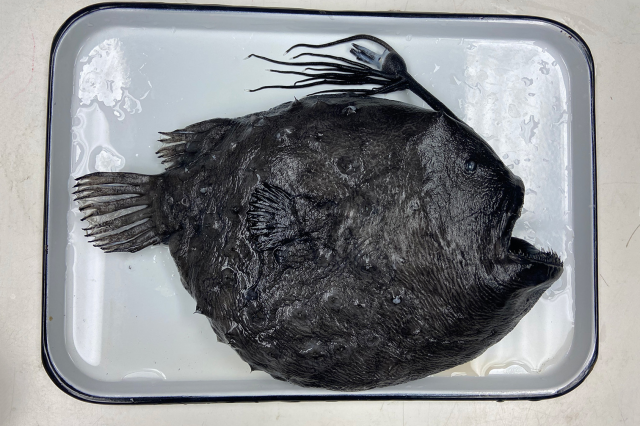
Photo by Sally Marquez
It doesn't just look unappetizing. The bumps on its body are the bases of spines, making the fish difficult to stomach for any would-be predators.
1 of 1
Living, glowing bacteria called photobacterium light up an anglerfish's lure, or esca, to attract unwitting fish in the deep, dark sea.
Photo by Todd Clardy
Its intimidating teeth are pointed inward to help make sure prey can't escape.
Photo by Sally Marquez
It doesn't just look unappetizing. The bumps on its body are the bases of spines, making the fish difficult to stomach for any would-be predators.
Photo by Sally Marquez
Hear our fish experts talk about why anglerfish are washing up on California beaches!

Read more about this famous anglerfish, and others, in this New Yorker article!